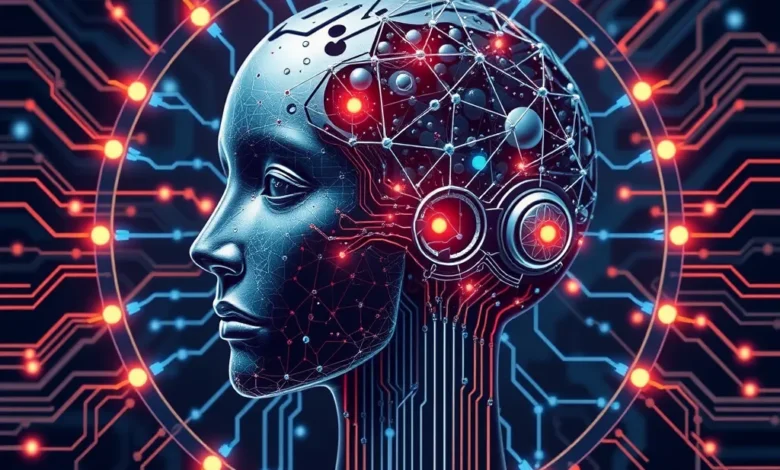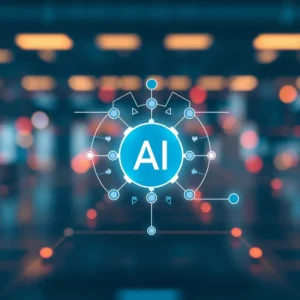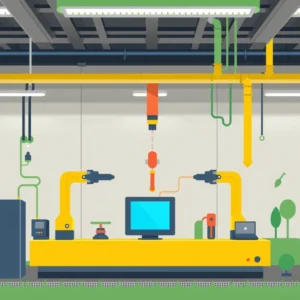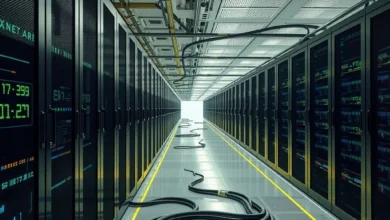Agentic AI and Neuromorphic Computing: The Future of Intelligent Automation

The convergence of Agentic AI and Neuromorphic Computing is poised to redefine intelligent automation, merging autonomous decision-making with brain-inspired hardware to create systems that learn, adapt, and act with unprecedented efficiency. This synergy isn’t just an incremental upgrade—it’s a paradigm shift toward truly intelligent systems that operate like proactive collaborators rather than passive tools.
What Makes Agentic AI Revolutionary?
Agentic AI represents a quantum leap beyond traditional automation. Unlike rule-based systems that follow predefined scripts, Agentic AI operates with genuine autonomy:
-
Goal-Driven Intelligence: It sets objectives, plans multi-step tasks, and dynamically adjusts strategies. For instance, in logistics, it might reroute shipments in real-time based on weather disruptions without human intervention.

-
Self-Improvement: Through machine learning, these systems refine their performance continuously. A customer service agentic AI could evolve its responses by analyzing past interactions to resolve queries faster.
-
Collaborative Autonomy: Agentic AI coordinates with humans and other systems seamlessly. In healthcare, it might schedule patient follow-ups while simultaneously alerting doctors to critical lab results.
This autonomy transforms industries: Retailers deploy it for hyper-personalized shopping experiences, while manufacturers use it to optimize supply chains by predicting demand fluctuations.
Neuromorphic Computing: The Brain-Inspired Engine
While Agentic AI provides the “mind,” Neuromorphic Computing offers the “brain”—a hardware architecture mimicking biological neural networks:
-
Efficiency Revolution: Unlike traditional chips, neuromorphic processors use event-based processing (responding only to changes, like neurons firing), slashing energy use by up to 90%. This enables AI to run on edge devices—think sensors in factories or wearables—without cloud dependency.
-
Real-Time Learning: These chips process data in parallel, allowing instant adaptation. A neuromorphic-powered drone could navigate unfamiliar terrain by learning from obstacles in milliseconds.
-
Resilience: Inspired by the brain’s robustness, they handle noisy or incomplete data flawlessly—critical for applications like medical diagnostics or autonomous driving.
Recent breakthroughs include nanowire-based devices that sense light for adaptive robotics and photonic systems accelerating data processing at light speed.
The Synergy: Smarter, Faster, and Greener Automation
When Agentic AI meets Neuromorphic Computing, intelligence becomes exponentially more capable:
-
Autonomous Systems with Human-Like Agility: Neuromorphic hardware enables Agentic AI to process sensory data (e.g., visual, auditory) in real time, allowing robots to perform complex tasks—like sorting irregular objects in warehouses—while learning from errors.

-
Energy-Efficient Intelligence: Neuromorphic chips’ low power demand makes always-on Agentic AI feasible. Smart cities could deploy vast networks of AI “agents” monitoring infrastructure—from traffic to air quality—without energy bottlenecks.
-
Adaptive Problem-Solving: In healthcare, this fusion could power diagnostic tools that cross-reference medical images with patient histories, spotting anomalies while continuously refining accuracy.
Real-World Applications Transforming Industries
-
Manufacturing:
-
Agentic AI predicts equipment failures and autonomously orders parts; neuromorphic sensors enable real-time quality control on assembly lines.
-
-
Healthcare:
-
AI agents manage patient intake and triage, while neuromorphic processors analyze MRI scans faster than traditional systems, reducing diagnosis times.
-
-
Retail:
-
Agentic AI personalizes promotions by analyzing live customer behavior, with neuromorphic chips processing in-store sensor data for inventory optimization.
-
-
Smart Infrastructure:
-
Autonomous grids use Agentic AI to balance energy loads, supported by neuromorphic networks that process data from millions of IoT devices.
-
The Road Ahead: Challenges and Possibilities
Near-Term Evolution:
-
By 2026, expect “embodied” Agentic AI—systems integrated with robotics for physical-world tasks, like construction or disaster response.
-
Neuromorphic advancements will enable AI that learns from minimal data, making automation accessible in data-scarce domains like agriculture.
Ethical Considerations:
As these systems gain autonomy, ensuring transparency and human oversight remains critical. Developers are prioritizing “human-centric” design—where AI augments human judgment rather than replacing it.
Conclusion: A New Era of Co-Intelligence
Agentic AI and Neuromorphic Computing are not just technological upgrades—they’re the foundation for a future where machines understand, decide, and act with contextual awareness and efficiency. This fusion promises to solve complex global challenges, from sustainable energy management to personalized medicine, while redefining collaboration between humans and machines. As these technologies mature, they’ll transform automation from a tool into an intuitive, adaptive partner—ushering in an era where intelligence is seamlessly woven into the fabric of everyday life.




